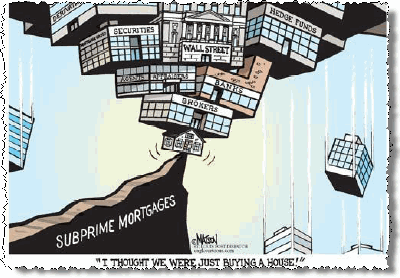sf May 2011
As a means for advancing science, knowledge and understanding, a paper is better than a presentation. Arguments are formed more precisely and one can analyze the premises, assertions, data and logical thread for cogency, consistency and coherence. But for projects that are more applied than scholastic or for interim work, presentations can be preferable to written work. Then, too, there are presentations of papers. For grading purposes, I've established this Presentation Evaluation Rubric[1], but I also want you to consider the big picture about presentations and your options in presenting.
 Purpose. Although there are important differences between oral and written work, most of the imperatives about good paper writing[2] hold for presentations. First and foremost: Why are you giving a presentation? What do you hope to achieve? You may, for example, want to make a sale or persuade colleagues or to support an initiative or to comprehend the seriousness of a problem. A scholarly presentation might involve persuading your audience of the value of new research or new research findings.
Purpose. Although there are important differences between oral and written work, most of the imperatives about good paper writing[2] hold for presentations. First and foremost: Why are you giving a presentation? What do you hope to achieve? You may, for example, want to make a sale or persuade colleagues or to support an initiative or to comprehend the seriousness of a problem. A scholarly presentation might involve persuading your audience of the value of new research or new research findings.
Layers of Purpose. Generally, a presentation should have a particular objective which is couched inside a larger goal. Rarely will a presentation make a sale; rather it is one step in a sales process, perhaps to sufficiently interest someone in a hands-on demo. In a presentation of academic work, the specific goal would likely not be to prove your thesis, but rather convince your audience to read the relevant work.
Leeway. You have more leeway in a presentation than a paper. Sometimes, you're still struggling to find a point or you may have interesting information and insights that you have not yet packaged into a precise proposal. But you should be moving towards a purpose, and your presentation could be the explicit search for how to parse and package your project findings and results.
Audience. Rarely a re your professor or classmates actual the target audience; rather they are the stand-ins representing your true audience �“ those who you believe can benefit from what you have to say. That may be obvious if you’re using the classroom to practice a sales pitch (which is a perfectly good use of course time), but it’s equally true for more straightforward scholastic work. If you’re presenting primary research, then the true audience is scholars in the domain of that research. If you’re presenting secondary research, i.e., others’ primary research, then the audience is other groups or individuals who will benefit from it. For example, the true audience for research on infant nutrition may be (other) young parents; the true audience for research on peak performance may be athletic teams or professional associations.
re your professor or classmates actual the target audience; rather they are the stand-ins representing your true audience �“ those who you believe can benefit from what you have to say. That may be obvious if you’re using the classroom to practice a sales pitch (which is a perfectly good use of course time), but it’s equally true for more straightforward scholastic work. If you’re presenting primary research, then the true audience is scholars in the domain of that research. If you’re presenting secondary research, i.e., others’ primary research, then the audience is other groups or individuals who will benefit from it. For example, the true audience for research on infant nutrition may be (other) young parents; the true audience for research on peak performance may be athletic teams or professional associations.
Making a Connection. Most presentations are a type of persuasive speech, and you should understand them that way. As such you can draw on the long history of insight, scholarship and pedagogy of rhetoric and persuasion going back to Aristotle, rather than (only) the more recent speculations as to good presentation practices.
Perhaps the single most essential element of persuasion is connection. And one area where presentations have a distinct advantage over papers is in making a connection. Writing offers far less opportunity for interaction than speech. An author must anticipate every question; a good presentation elicits a direct exchange of questions, concerns and ideas.
To do this, the presenter must be conversational. No bulky text, over-complicated graphics, or jargon. One essential component of a conversation is good eye contact. Overreliance on notes, slides or graphics interferes with eye contact. So best to keep notes and text to a minimum. Do not read, but rather speak to your audience, or better speak to the individual people in your audience as directly and as naturally as possible.
Engendering participation not only strengthens connection, but also generates valuable feedback in the form of questions and comments. Participation also warms up an audience and encourages them to pay attention. Audience attention and interaction result not only in a better experience for all involved, but gives you the feedback you need to make the performance better yet the next time you deliver it.
 Humor can go places where straight reason, simple prose or angry criticism cannot. For example, the cartoon at right illustrates the instability of a financial system built on subprime mortgages Even better, the video (far right) exposes a crisis- in-the-making by boiling down systemic (financial) fraud bedeviled in mind-numbing details to its simple absurdity and underlying truth. Prepared jokes, though, are difficult and risky. Even the best comedians with lavish budgets and talented staffs whose job is nothing more than to write jokes, will often flop with a joke. Trying to come up with something can also eat away at time needed to analyze data and focus primary arguments. Better than preparing jokes is to simply give yourself time, freedom, and openness of thought. From there, let humor flow as it will. Humor is a part of life and emerges organically from honest interaction. [3]
Humor can go places where straight reason, simple prose or angry criticism cannot. For example, the cartoon at right illustrates the instability of a financial system built on subprime mortgages Even better, the video (far right) exposes a crisis- in-the-making by boiling down systemic (financial) fraud bedeviled in mind-numbing details to its simple absurdity and underlying truth. Prepared jokes, though, are difficult and risky. Even the best comedians with lavish budgets and talented staffs whose job is nothing more than to write jokes, will often flop with a joke. Trying to come up with something can also eat away at time needed to analyze data and focus primary arguments. Better than preparing jokes is to simply give yourself time, freedom, and openness of thought. From there, let humor flow as it will. Humor is a part of life and emerges organically from honest interaction. [3]
Slides. PowerPoint slides have become a presentation standard. Developing a PowerPoint presentation can be a useful way to order one's thoughts. Course projects, especially, require a mix of structured argument and data analysis that often lends itself to a slide-deck presentation, with a linear sequence of bullet points and supporting a variety of visual aids. PowerPoint also provides a visual input for those people who are visual learners so they don’t have to rely on only auditory input. So, feel free to use PowerPoint; in all likelihood, it can help you organize what you have to say and help most listeners will understand most talks better
But in general, presenters commonly pay far too much attention to developing a slide deck, and correspondingly too little to the overall quality of the argument and connecting with their audience.
Rather than simply use PowerPoint unthinkingly, think through your purpose and audience, and consider your options.
Do you need slides at all? Whatever merit PowerPoint has a presentation tool, slide decks are a poor substitute for a reasoned argument.[4] [5]
Moreover, presenters often, if not usually, use slides as a crutch, and in doing so, forego the single great advantage of a presentation, which is the opportunity to connect with their audience. Virtually all of the greatest presentations of history have been slide-free. Most have been spoken only. Lincoln needed no slides or visual aids for his Gettysburg or 2nd Inaugural address. Neither did Winston Churchill nor Martin Luther King, Jr. Compare the power with “We Shall Fight on the Beaches” or "I Have a Dream" with virtually any electronic era presentation and think again about the value of slides.
Moreover, the fact that PowerPoints and other electronic tools are so standard gives an added potency to the AV-less presentation. In some ways, no-tech is the new hi-tech. any time some just speaks to you, nakedly without props, there’s a wow factor. And it’s not just that it’s unusual; in some ways, the human voice really is the ultimate hi-tech, in that it is the ultimate tool for both nuanced expressiveness and making a connection. It’s difficult to imagine a more moving and memorable presentation than Jimmie Dunne’s reflection on his experiences and lessons in leading Sandler O’Neill in the aftermath of 9/11. All of us in attendance will, I'm sure, be forever grateful that that was a living conversation rather than a power point deck.
Few presentations and even fewer course projects aim for "I Have a Dream" or “We Shall Fight on the Beaches”. More should. But we’re not always swinging for the fences. A practical compromise is to focus your energies on your content rather than slides and use PowerPoint (or some alternative) to simply support your message, not to craft it. Here are some tips[6] and here is an example of a strong PowerPoint presentation[7](Other examples most welcome.)
Alternatives. Before PowerPoint, data and illustrations were presented on posters or transparencies. So one possibility is to drop the slides and simply present what data you need using visual aids (see section below)
There are also newer applications. Probably the most promising of these is Prezi, an engaging “layered” presentation system that is less dependent on linear flow, basically a whiteboard, which ability for many magnitudes of zooming in and out. Here's a particularly engaging prezi on the surprising truth about what motivates us, done in a lively animated style.
 Visual Aids. Decisions about visual aids are independent of the decision of whether to use a slide deck.
Visual Aids. Decisions about visual aids are independent of the decision of whether to use a slide deck.
Graphics used pointedly can convey a message far more powerfully than words or numbers. In my book on the 2004 election, for example, a basic statistical normal probability curve demonstrates just how unlikely the Ohio election results were given the polling data.
A simple histogram (left) compares disparities between polling results and purported voting results between precincts where votes were recorded and tabulated on machines versus those where votes were cast on paper and publicly counted. It's immediately apparent that large disparities consistently favored the incumbent in machine-count precincts but were negligible in hand-counted precincts.
Pictures, in general, as they say, are a worth a thousand words, as for example, this pic of drinking water from an area subjected to fracking.



Pictures can go above and beyond descrip�tion; not only illustra�ting truth but eliciting powerful emotions. Consider the plight of the pelican caught in the BP oil spill. Or the polar bear suffering the final consequence of global warming and habitat loss.
The famous June 1972 photograph of a naked, severely burned Vietnamese child running on a road after a US napalm attack is largely credited with turning public opinion against continued support for the war.
Note that the value in these visual aids are that they do what words cannot. They’re not text or bullet points.
Time Most presentations are timed, often with a hard clock. It’s usually less time than you want or feel you need. Even when you have as much time as you’d like, your audience is grading you on the clock. If you take more time, it had better be worth it. There are a few keys to staying within a given time allotment:
1. Limited objective. You’re not going to prove your thesis, but a compelling five minute persuasive presentation could inspire your audience to read the relevant work.
2. Eliminate the extraneous / Fewer, simpler slides. What do you need to make your point? Determine your basic supporting arguments and data and cut everything else out. Eliminate all tangentials and distractions. Boil slides down to the essentials.
Structure/Timing
No matter how much or little time you have, seek proportionality. The basic structure of a talk is:
Introduction/hook (5% of time or less)
Subject Sentence -- Main Thesis
Main point 1
Subpoint 1.1 with supporting data
Subpoint 1.2 with supporting data
Subpoint 1.3 (optional)
Main point 2
Main point 3 (optional)
Main point 4 (optional)
Conclusion (5% of time or less)
Timing: See Presentation Timing
3. Put all support material (and interesting tangential material) in support documents: in handouts you can give to your audience and/or on a website that they can view later.
Here are some suggestions for how to do a 15 minute research presentation.
Support Documents Put all support material and interesting tangential material in support documents. These can be handouts you give to your audience and/or material on a website that they can view later. You should reference them in your talk. And they should all be well labeled, well organized documents, not just dumps of raw material that didn’t make their way into the presentation.
Other Considerations There are a whole range of mechanical things, including style and speech. I include all these on this Presentation Mechanics Rubric. I comment on them as well, but I don’t grade them and do not recommend you worry about them for a class presentation. Speaking and mechanics get better with practice.
For your grade and class performance, as in a paper, content -- the relevance, clarity and rigor of your argument -- trumps all: Why is what you’re doing important? What is the one main point you want to make, i.e., that you want us to understand? How well have you drawn on data and structured your argument to demonstrate that point?
Comments and/or suggestions most welcome
Notes:
- 1] Freeman, Steven F. (2011) Presentation Evaluation Rubric http://cpor.org/presentation_evaluation_rubric.cgi
- 2] Freeman, Steven F. (2009) Guide to Developing and Writing a Research Paper http://ciow.info/docs/ResearchPaperEvaluation.pdf
- 3] Over the years, Dilbert’s characters have been dealing with lots of PowerPoint Presentation. Here's a collection.
- 4] Hammes, T.X. (2009) Dumb-dumb bullets: As a decision-making aid, PowerPoint is a poor tool. Armed Forces Journal
- 5] Bumiller, E. (April 26, 2010) We Have Met the Enemy and He Is PowerPoint. NY Times
- 6] Gallo, Carmine (June 2, 2006) PowerPoint Like a Pro. BusinessWeek
- 7] Kawasaki, Guy (June 2006) The Art of the Start.
Steven F. Freeman